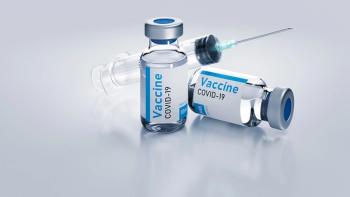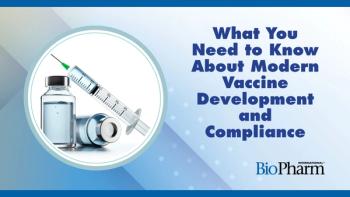
- BioPharm International-01-01-2021
- Volume 34
- Issue 01
Supporting the Industry During a Pandemic
Outsourcing increases as the industry balances development and manufacturing of both COVID-19 treatments and non-pandemic-related medicines.
The COVID-19 pandemic tested the R&D capabilities of bio/pharma companies and highlighted some of the challenges present in the bio/pharma industry before the crisis hit. Among the lessons learned from the pandemic response are changed perceptions within the industry regarding flex capacity, risk management, supply chain, and inventory control, according to Eric Langer, managing partner at BioPlan Associates.
“These are not ‘new’ factors by any means. But the pandemic has demonstrated how critical they are, not just in normal times, but during crisis as well,” says Langer.
Is the industry up for the challenge of handling the pandemic? “…the industry has in many ways known [that a pandemic response] would be possible, and all the ‘moving parts’ have generally worked at the remarkable speed needed to develop vaccines and therapeutics around the world,” Langer says.
Contract manufacturing organizations (CMOs) and contract development and manufacturing organizations (CDMOs) proved integral to the biopharmaceutical industry’s ability to handle the pandemic, providing expertise, facilities, and manufacturing capacity sponsor companies did not have. COVID-19 has emphasized the benefits of CMOs and CDMOs. So how did these organizations fare in 2020 and what is their outlook for 2021?
Can capacity meet demand?
Capacity has been a challenge in the past year, says Langer. “CMOs and manufacturers have been managing their capacity since the beginning of this crisis, from vials to stoppers, from single-use devices to fill/finish lines, and all the accompanying logistics. Many non-COVID projects have reportedly been shifted to other facilities, and even other partners, which has created bottlenecks in other adjacent segments, as well. But by managing existing capacity, we’re already seeing a smooth transition from R&D and clinical production, to large-scale manufacturing,” he says.
Fiona Barry, associate editor at PharmSource–GlobalData, agrees that there is insufficient capacity for the level of demand caused by the pandemic but doesn’t see the industry being able to catch up to the demand in 2021. “Eventually there will be a few different vaccine types on the market, and these will require different technologies/processes to manufacture, and so capacity will be specific to which vaccine types gain approval,” she says. “A number of promising vaccine candidates in late stage use newer vaccines technologies such as mRNA-based products. As these become approved—the UK [United Kingdom] issued an emergency approval of Pfizer/BioNTech’s mRNA vaccine BNT162b2 on [Dec. 2, 2020]—then repurposing more traditional vaccine facilities will not help capacity issues.”
A balancing act
The pandemic has created another challenge: maintaining the manufacturing of non-pandemic drugs in addition to needed COVID-19 treatments. In 2021, Langer says, CMOs and CDMOs will continue to balance pandemic and non-pandemic-related programs by shifting projects from facility to facility. “The cascade of scheduled pre-pandemic, non-COVID projects are necessarily continuing, since these, too, are lifesaving, and must be moved forward, despite the challenges to R&D and clinical trials during these times,” he says.
COVID-19 vaccine developers are contracting with CMOs and CDMOs at a rate not seen before in the industry, says Barry. “Consequently, infectious disease drugs have already overtaken perpetual leader oncology as the year’s top therapy area for contract manufacturing service agreements, since many of these vaccine-developer companies are small and lack manufacturing capabilities. Even the largest companies require extra resources to supply billions of doses with AstraZeneca and Inovio having the largest number of contract service agreements to date. Pharma companies such as Pfizer are also pushing internally manufactured drugs out to CMOs to free up space for COVID-19 vaccine manufacture,” she says.
Barry agrees, however, that manufacturers will continue to juggle the needs of non-pandemic therapies and COVID-19 medicines and vaccines. “More than 1000 clinical trials worldwide were disrupted in 2020 by COVID-19 due to suspended or slow enrollment or delayed initiation (1). Resumed trials and delays in manufacturing of advanced biologics, many of which require the same capabilities as vaccines, will cause even greater demand of these already scarce resources in 2021,” she says. Cell and gene therapies have also been affected by the pandemic, according to Barry. She notes that a bottleneck in viral vector manufacturing was already a problem prior to the onset of the COVID-19 pandemic (2).
Outsourcing to increase in 2021
This past year saw a 3% increase in contract manufacturing agreements between January to November 2020, according to Barry. “We know from previous years that these agreements are often revealed in hindsight, so the increase is probably much larger. What is more notable than the change in volume is the shift in therapy area covered by these agreements: while oncology dominated in 2019, infectious disease is the top area in 2020,” she says.
There was also an increase in private companies and institutions outsourcing to CMOs in 2020, says Barry. “From January to November 2019, approximately 36% of contract manufacturing agreements were outsourced by private companies or institutions. Over the same 11 months in 2020, this number increased to 47%,” she says. “Smaller companies that are unable to invest in their own facilities are more likely to outsource products than larger companies. This is especially true for products in accelerated development such as COVID-19 vaccines.”
And, according to Langer, the pandemic is expected to increase the amount sponsor companies outsource in 2021. “We found that 70% of innovator/sponsor companies expect to outsource more as a result of the pandemic. This is likely due to the recognition that human capital is going to continue to be in short supply. Finding reliable outsourcing partners able to address these shortages in staffing will be an ongoing concern, well after the pandemic is resolved,” he says.
The industry is preparing for the continued COVID-19 vaccine demand in 2021, says Barry. “Pharma companies and CMOs are engaged in a wide variety of investments to better prepare for COVID-19 vaccine demand, which includes increasing captive capacity (building or acquiring) and engaging in collaborations to expedite vaccine development and approval. We will see this continue into 2021, as well as investment in cold chain storage required for mRNA vaccine transportation and distribution. In addition, there will be a large population of COVID survivors who will require new treatments with unique dosage forms,” says Barry.
Outsourcing companies prepare for new year
In 2020, several CMOs and CDMOs announced plans to expand their facilities and services in 2021. Thermo Fisher Scientific announced in December that it is expanding sterile drug product development and commercial manufacturing in North America and Europe (3).
The company is planning to expand facilities in North Carolina, the UK, and Italy and will add 15 development and current good manufacturing practice (CGMP) commercial production lines to support live virus, aseptic liquid, and lyophilized vial filling capabilities.
The company also announced a new sterile manufacturing facility in Singapore and a new integrated biologics and sterile drug development and manufacturing site in Hangzhou, China (3).
Lonza announced in late November 2020 that it is expanding its particle engineering and drug product capabilities at its Bend, OR site. The expansion will include new suites for the development and clinical manufacturing of drug product intermediates and drug products using spray-drying, hot-melt extrusion, and melt-spray-congeal processing and CGMP suites for early-phase CGMP manufacturing featuring added storage, gowning, and a customer in-plant viewing corridor (4).
Also in late November, Baxter BioPharma Solutions announced a $50 million expansion of its sterile fill/finish manufacturing facilities in Bloomington, IN.
The expansion will include a new 25,000-sq.-ft. warehouse, a filling line for flexible plastic containers, an automated syringe fill line that can fill up to 600 units per minute, and an automated visual inspection line (5).
References
1. GlobalData, Sector Impact: The COVID-19 Pandemic Impact on Clinical Trials, GlobalData, August 2020.
2. GlobalData, Gene Therapy Market Opportunity for CMOs–2019 Edition, GlobalData, December 2019.
3. Thermo Fisher Scientific, “Thermo Fisher Scientific Further Expands Global Footprint for Drug Product Development and Commercial Manufacturing,” Press Release, Dec. 9, 2020.
4. Lonza, “Lonza Expands Development and Manufacturing Capabilities at Bend (OR) Site,” Press Release, Nov. 30, 2020.
5. Baxter BioPharma Solutions, “Baxter BioPharma Solutions Announces $50 Million Investment to Expand Sterile Fill/Finish Manufacturing Site in Bloomington, Ind.,” Press Release, Nov. 24, 2020.
Article Details
BioPharm International
Vol. 34, No. 1
January 2021
Pages: 46-49
Citation
When referring to this article, please cite it as S. Haigney, "Supporting the Industry During a Pandemic," BioPharm International 34 (1) 2021.
Articles in this issue
almost 5 years ago
Biopharma Gets Back to “New Normal” Businessalmost 5 years ago
Compensation Does Not Necessarily Align with Job Satisfactionalmost 5 years ago
Can Cell and Gene Therapies Achieve Their Full Potential?almost 5 years ago
Cultivating a Synthetic Biology-Based Approach to Improving Cell Culturealmost 5 years ago
EASY: a Disruptive mAb Purification Process to Reduce Cost of Goodsalmost 5 years ago
Accelerating Technology Adoption to Track the Cold Chainalmost 5 years ago
Using Protein Characterization to Support Regulatory Submissionsalmost 5 years ago
Pandemic Control to Shape Biopharma in 2021almost 5 years ago
Ensuring Vaccine Supply Meets NeedNewsletter
Stay at the forefront of biopharmaceutical innovation—subscribe to BioPharm International for expert insights on drug development, manufacturing, compliance, and more.




